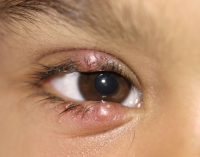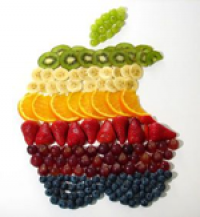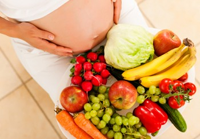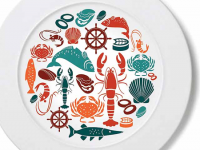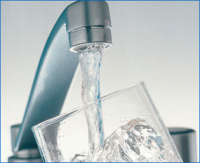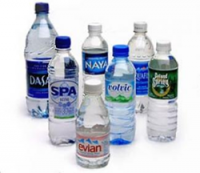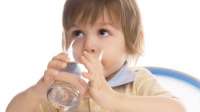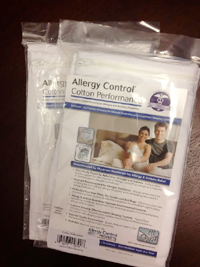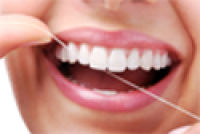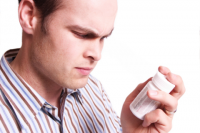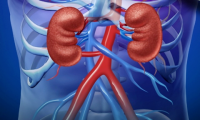Say bye to Stye Stye which is also called hordeola, are bacterial infections and appear as small bumps on the upper or lower eyelids. Styes are usually harmless and will go away on their own within one to two weeks when your body fights off the infection. To prevent a stye in the eye, always wash your hands before touching your eyes and maintain good eye hygiene, especially if you wear contact lenses. This infection is not necessarily contagious and can go on its own. Keeping warm compresses on the eye is an effective method to prevent it from further growing. This infection can come when you frequently visit swimming pools which often get contaminated. If the symptoms persist for long a visit to the eye doctor is a must. Presenting a few tips to prevent Stye. Basic tip: Keep your eyelids and eyelashes clean.Add three drops of baby shampoo to a small bowl of warm water. Soak a clean cotton ball in the solution, and then gently scrub both eyelids for 30–60 seconds with your eyes closed. Rinse with warm tap water and dry gently. · Rub your palms vigorously and with the heat generated apply this to the eye · Avoid sharing eye make-up with others · Avoid sharing towels and other linens such as pillowcases and washcloths · Visit your eye doctor regularly · Begin treatment as soon as symptoms develop; contact your eye doctor for specific instructions · Do not touch or rub your eyes, especially if you have a stye · Clean your eyes regularly after you visit the swimming pool.
Water Chestnuts are Good for You Water Chestnuts which is predominantly used in western cuisine has its place in Indian cooking where it popularly known as Singhade and the flour made from it is called Singhade ka atta.The water chestnuts are boiled, peeled, dried, and ground into flour. It is similar to corn starch and is used for making food items especially during religious fasting periods where the fast is broken with food made from water chestnut flour. The water chestnut flour has many health benefits too. ->Fresh water chestnuts have double the amount of potassium, zinc, B vitamins and vitamin E when compared to the flour form. But it should be eaten in moderation or else it could lead gas problems and a bloated feeling. ->Nutritionally, water chestnuts flour is a good source of potassium and fiber. ->They are low in sodium, and fat is virtually non-existent.Which is great for people who are on a diet.You could alternately use this flour along with whole wheat flour. ->Calorie wise, one cup of water chestnut slices contains about one hundred-thirty calories. But for the low-carb dieters, water chestnuts are high in carbohydrates. So you could limit eating these directly. ->They are also known to be a natural coolant to the body.
More about Phytonutrients Phytonutrients are not just single elements, there are few others in that family, and each one has its own quality in helping a human body sustain a challenging life. We come across a few of these names on Drug or Food ingredient lists, medicine prescriptions, but generally don't know what each of them relates to or treats. Lutein helps in cases of blindness and cataracts, protecting against macular degeneration. Zeaxanthin protects against developing blindness. Phenols reduce oxidative stress. Lycopene helps prevent prostate cancer. Sulforaphane prevents colon cancer. Carotenoids stimulate the immune system. Ellagic acid fights cancer. Indoles fight cancers more than Ellagic acid. Catechins are antioxidant flavonoids. Flavonoids are anti-inflammatory and they protect against allergic reactions. Anthocyanidins strengthen the collagen protein in soft tissues, tendons, ligaments, and bones. Phytosteroids block the development of breast, colon, and prostate diseases. Quercetin protects against heart disease and allergies and reduces inflammation in sports injuries.
Food Cravings during Pregnancy About two-thirds of women experience food cravings during pregnancy. It is usually fine to indulge in these cravings if it provides essential nutrients, but if one is craving for an unhealthy food or the craving persists to the point that it prevents her from getting the other essential nutrients the baby needs, she needs to take steps to create more balance in the daily diet and make sure to take the prenatal vitamins. Some women feel strong urges to eat nonfood items like ice, laundry starch, dirt, clay, chalk, ashes, or paint chips when they are pregnant. This is known as pica, and it may be associated with anemia. These nonfood cravings can be harmful to both Mom and baby, so it is very important that she resists them and also lets her Doctor know about them immediately. If the expectant Mom has any cravings that interfere with her ability to eat balanced meals and gain weight properly, she has to consult her obstetrician for advice. If she has an urge to eat more sweets, or spicy and deep fried foods, they have the ability to force her weight gain and cause imbalance in her Blood pressure or Blood sugar. Registered dietitians, nutrition experts are also able to help one maintain good nutrition throughout the pregnancy.
Health benefits of Seafood Research has shown that eating fish and shellfish regularly is beneficial to our bodies in many ways. Seafood provides the body with many essential nutrients which keep us running smoothly, including iodine, selenium, zinc and potassium. They are also an excellent source of many vitamins, including vitamins A and D. Great for your heart It's no coincidence that fish-eating Inuit populations in the Arctic have low levels of heart disease; seafood is low in saturated fat and high in omega-3, which can both protect the heart from disease and lower the amount of cholesterol in the blood. One study has even suggested that an extra portion of fish every week can cut risk of heart disease in half. Joint benefits Eating fish as a regular part of a balanced diet has shown to ease the symptoms of rheumatoid arthritis, a condition which causes the joins to swell up. Recent research has also found a link between omega-3 fats and osteoarthritis, suggesting that eating more seafood could help to prevent the disease. Healthy eyes Eating oil-rich fish regularly can help to keep the eyes bright and healthy. A recent study has suggested that omega-3 fatty acids can help to protect the eyesight of those suffering from age-related macular degeneration (AMD), a condition which causes the retina to degenerate and the eyesight to become blurred. Fish and shellfish also contain retinol, a form of vitamin A which boosts night vision. Prevents Depression Seafood may also play a large part in preventing depression; research has highlighted links between low omega-3 levels and a higher risk of depression. Seafood could also help us to avoid Seasonal Affective Disorder (SAD) and post-natal depression. For great Skin Not only does omega-3 help to protect the skin from the harmful effects of the UV damage, but eating lots of fish can also help with the symptoms of skin conditions such as eczema and psoriasis. Fish is also a great source of protein, which is an essential ingredient of collagen, a substance which keeps the skin firm and flexible. Bowels protection Evidence suggests that a diet rich in fish oils can help to protect us against serious inflammatory bowel diseases (BD) including Crohn's disease and ulcerative colitis. There is also evidence to suggest that omega-3 could help to slow the progression of inflammatory bowel disease in some sufferers. Brainpower Booster The human brain is almost 60% fat, with much of this being omega-3 fat. Probably for this reason, research has indicated that people who eat plenty of seafood are less likely to suffer dementia and memory problems in later life. DHA, an omega-3 fat found in seafood, has also been linked to improvements in children's concentration, reading skills, behaviour, and Attention Deficit Hyperactivity Disorder (ADHD).
The MSG Damage MSG, Mono Sodium Glutamate, is a form of amino acid glutamate that acts as an excitotoxin, it overexcites nerve cells and may eventually damage the brain and nervous system. MSG consumption is linked to obesity, premature death in infants, and as it targets the brain, it is also linked to autism. MSG is used in most store-bought processed foods, inorder to add more taste to our taste buds, and excite them, it actually makes even the bland, boring food taste good. Earlier, MSG was a hidden ingredient in the processed foods, and was not printed much on the label. But now, FDA requires that the ingredient be listed on food labels. e Hence, food manufacturers have found their own way to camouflage the name and print it. It is disguised in so many other new names, one can't imagine. MSG was previously known well as Ac'cent, Aji-No-Moto, and Ve-Tsin. These days, it comes as Hydrolyzed vegetable (or plant) protein, Autolyzed yeast, Yeast extract, Soy protein isolate, Natural Flavors, Autolyzed plant protein, Glutamate, Sodium Glutamate, Monopotassium glutamate, Glutamic acid, Calcium caseinate, Sodium caseinate, Yeast food, Hydrolyzed corn gluten, Gelatin, Textured protein, Yeast nutrient. Also avoid using foods with the following ingredients, as they often contain MSG or create MSG during processing. Carrageenan, Natural pork, chicken, or beef flavoring Broths,stocks, bouillons, Flavors/flavourings Natural flavors/ flavourings Maltodextrin, Citric acid, Barley malt, Malt extract/ flavouring Soy sauce (not tamari) Seasonings (when the herb/seasoning name is not specified) When i learnt about these new names, i scanned my whole kitchen and pantry, and i was shocked to really find names like citric acid, maltodextrin, carrageenan, and a pack of vegetable stock, a soy sauce bottle. However, as i was aware of MSG-AGINOMOTO from good number of years, i could avoid MSG directly in my food storage. Being local to USA, i know that we can even as the local restaurants to prepare food without MSG for us, however, the popular chain restaurants can't do it, as their broths, stocks are pre-made to maintain as common taste. In that case, think of salads. When are you striking your kitchen?
High Proteins for Calorie loss According to new research published in the Journal of Science and Medicine in Sport says that if you are not losing weight even after a rigorous workout could be a sign that you're cheating yourself and not eating the right food for the calorie burn. For the study, 10 "recreationally active" college-age women (so, not athletes) of normal body weight were given a high-protein meal (45 percent protein), low-protein meal (15 percent), or no food at all before walking on a treadmill. The women who ate the high-protein meal an hour prior to working out burned more calories per minute than the women who ate nothing. (No difference was found between the low-protein group and the fasting women.) The additional calorie burn amounted to 185 calories over the following 24-hour period. "The body will use more calories when you have additional calories to expend (i.e., after eating)," says lead study author Ashley Binns, a Ph.D. student. Assuming you ate the same amount of total daily calories, the additional calorie burn could add up to a 15-pound weight loss over the course of a year. Although fasting before exercise has previously been used as a method for weight loss, the body breaks down muscle and/or fat as fuel sources if you don’t eat food prior to exercising, says Binns. "This could potentially result in muscle weight loss." And less muscle ultimately means less calorie burn. Plan to eat a high-protein snack an hour before your workout to burn more calories during exercise. The exact amount of protein you should consume is still up for debate, though, says Binns. "Many studies suggest consumption of upward of 30 grams of protein spread throughout the day across three meals is ideal for maintenance of weight and/or weight loss." Good high-protein foods include protein drinks, egg whites, peanut butter, sprouts or yogurt.
How much to drink Our bodies yearn for pure, clean water. Everyone is concerned about how much to drink per day. To determine how much water our body needs, take your body weight in pounds and divide the number by two. That's the number of Ounces we need to drink per day to stay fit. The same principle holds true for a child, unless he or she is an infant, except if the pediatrician recommends. If you are an average-sized adult, this is how you should calculate the amount of water to consume in a normal day. On a summer day, you will need and will consume more. The total amount of water includes the milk, juices, buttermilk, green tea that we consume in a day. For Children, it will be comparatively less, based on their body weight. And they don't need to consume water directly, it can be in the form of watery-veggies like cucumber, celery, lettuce, and fruits like watermelon, oranges, grapes....We may not imagine but there are some more fruits and vegetables that are high in water content, Bananas are 70 percent water, apples are 80 percent, tomatoes and watermelons are more than 90 percent water, and lettuce is 95 percent.
Water- When, What and How to drink it Most adults and kids wait until they get extremely thirsty, but by then they are mostly dehydrated. Some drink only during meals---a mistake. When we drink too much water during meals, it washes out the hydrochloric acid, digestive juices, and enzymes in our stomach and intestines, which delays digestion. Fluids, iced drinks particularly quench the thirst same time, they quench the digestive process similarly to pouring water on fire. Drinking just some room temperature, unsweetened water during meals is right, just enough to smoothen the food pipe to swallow food, and to tackle strong flavors. Stick to only 8 ounces ( 0.2 litres) of water during meals. Warmer and drier climatic zones force more water out of ones body through perspiration and exhalation. Hence drinking twice as much water as you actually need, soon after returning from a hot outdoors is necessary. Some mothers feed the newborns with water, when its summer. Milk is predominantly water, so infants do not need water. IN a perfect scenario, feeding water to an infant before six months of age is not much recommended. But if you are introducing the child food after 6 months of age, feed just one ounce (0.02 litres) of water, twice a day, while eating. At later stages, if the child eats bread or foods made with flour, he or she will need more water as these foods are dry and oily. Most people are choosing bottled water over tap water, but have they checked how regulated that particular bottled water is? Not every bottling unit follows regulations, whereas City/ Corporation water is much regulated in some areas. In a study, one hundred brands of bottled water showed arsenic, trihalomethanes, bacteria, other contaminants, man-made chemicals, phthalates, high levels of flouride, and coliform bacteria in varied percentages. Not every bottled water is lead free. Think before you confidently spend your bucks on bottled water, instead of using the much regulated tap water. It even puts a control on the plastic dumps in the whole world. However, it varies from area to area...one has to check with the local Water Supply Agency and the locally available Bottle water brand before deciding to make a shift. In some places, bottled water is definitely safer than the common water.
Water-The Miracle Water is the most important nutrient for human bodies. It is involved in every function of our bodies. Did you know? Human body is 55 to 60 percent water, our muscles are about 75 percent water, our bones are approximately 25 percent water, our brain cells are about 70 percent water, our blood is approximately 83 percent water. Adult men are about 60 percent water and adult women are about 55 percent water, even Newborn babies are about 78 percent water, when born, this percentage reduces to 65 percent by age 1. Even, a grown human body looses about 2 quarts of water a day through perspiration, urination and exhalation. For most health problems, water deficiency is the cause and drinking adequate water is the easiest and quickest cure. Water deficiency can cause headaches, heartburn, depression, joint pains too, not just dehydration. Water plays a vital role in regulating body temperature, transporting nutrients and oxygen to cells, removing waste, cushioning joints and protecting organs and tissues. Some Doctors treat their patients by prescribing adequate water intake and most of them get better. Doctors say drinking sufficient amounts of the right kind of water may also do more to improve a child's health than anything else we can do. How much water to drink per day, based on ones body weight, What kind of water is good, What kinds of foods contain more water are coming up in our next article....
Minerals for Healthy Bones Eating and exercising right can not only build or maintain our weight and muscles, but provide bone health too. Boosting bone power enables one to fight against Osteoporosis, the frequently heard name these days. Our body can build on strong bones until a certain age only, after which one is only left with a chance to maintain the bone health. Bone-Building vitamins-minerals : Everyone knows Calcium is important for bones. But calcium as a supplement is not well-absorbed on its own, there needs to be a supportive vitamin taken together with calcium so that the body absorbs it. Getting it from food is much more effective--in addition to Milk, yoghurt and cheese, other high calcium sources include broccoli, soy, kale, other dark leafy greens. However, certain compounds in vegetables do block some calcium absorption. Because our body can take in only about 250 mg at a time, we should try to spread our intake over the course of a day. Aim to get 1,000 mg a day from food if you're under 50 years of age, and 1200 mg a day if you're over 50. People who live in low-sunny regions, experience Vitamin D deficiency which leads to bad bone health. Hence, people who are aged 50 and more and those who are at risk for bone health issues, should consider taking vitamin D supplement, atleast in the winter , rainy months when sun shines less. Aim to get 800-1000 IU daily from food and supplements. At your next Doctor's visit, have your Vitamin D levels tested, which gives you a plan. Vitamin K is famously known to help clot blood during accidents and injuries, but it also plays a part in bone health. That's one reason, most experts don't usually recommend vitamin K supplement. Aim for 90 mcg daily from food sources like leafy greens--spinach, kale, romaine lettuce, broccoli, brussel sprouts. Magnesium is a multipurpose mineral that helps bone form and regulates vitamin D levels.Research shows women with Osteoporosis often have lower concentration of magnesium. Aim for 320 mg daily from 1 medium-size banana (32 mg), 1 cup black beans (120 mg), 2 slices whole wheat bread (46 mg) and 1 cup brown rice (84 mg). Some more myths and stories coming up.... - Prathyusha
Pillow Life We thrive for the right pillow when its bed time..infact, one wrong pillow spoils the whole next day! People shops days and months hunting for the right pillow if they happen to shift home from country to country or to a place where one couldnot take the pillow they were used to... If thats the case, then we should all be hunting for a new pillow every 4 years. Ideally, a common man should switch to a new pillow atleast every four years. One used pillow carries thousands of dust mites, bacteria and fungi spores. For people who have allergies or asthma, then they should be looking for a new pillow, tossing the old one, every one to two years, to stay away from the irritating buildup of microbes. Every pillow looses its stiffness or cushioning after a year of regular usage, if not because of allergy fear, to get a better night's sleep, we all need a pillow changeover. These days, pillows that are allergen proof and dust proof are available at affordable prices. New pillow cases that provide protection for dust mites and allergens may not be excellently efficient if the pillows are old. Doctors suggest investing in a new pillow than spending on expensive pillow covers.
Firm and Uplift them A common and most googled problem among women is the issue of sagging breasts .We all know by now that the effects of pregnancy, breast feeding, weight loss, and aging has a significant impact on a woman's breast. Breasts are made of fat, tissues, and milk producing glands and not muscles; this makes it difficult to shape and tone breasts. Because of the problems mentioned we lose elasticity and start to sag so to prevent that you could try the following to uplift them. Exercises: Proper pectoral exercises, yoga are some of the ways to help ,though it is not possible to tighten the loose skin, you can shape and tone the muscles around your breasts to make it appear more firm. Some of the effective yoga postures on how to tighten the breast are Utthita Trikonasana (Triangle Pose), Uttanasana (Standing Forward Bend), and Bhujangasana (Cobra Pose). To tighten breasts some breast lift exercises like stability ball dumbbell presses can be done. Massages: Olive oil massaging, ice massaging, cucumber and egg mask, vegetable oils and essential oils in different forms and ways can be used for firming the breast. Ayurveda combines both oil and massage treatment very effectively and if taken as course could be beneficial to firm the sagging breasts. It is best to avoid doing forward bends, contracting poses, jogging, jumping and running as they are detrimental to sagging breasts. Use good quality support lingerie, while breast feeding and once you are done start the exercises and massages to prevent them from sagging.
BAD BREATH? Doctors call it with different names, Bad breath, halitosis or oral malodor....whatever be it, it is one major cause of worry. There can be a number of possible causes for bad breath, ranging from harmless to serious. the most obvious offenders are the foods we eat.Garlic, onion, cigarette smoke and alcohol can be smelly, but if one doesn't brush teeth twice a day and floss daily, any food can cause bad breath. that is because of the bacteria left in ones mouth. Most of the bacteria hide out on the back of the tongue. Brushing twice a day anyways involves cleaning the tongue too. So that solves the problem partially. Another culprit is dry mouth. If one hasn't been drinking enough water, this can cause a temporary problem. When saliva in mouth in decreased, this problem arises leading to bad breath. It can occur due to few medications, salivary gland problems or simply by breathing through the mouth if one has cold. Doctors are the right people to suggest the right kind of source to increase saliva production in the mouth. Some suggest chewing sugar-free gums but they usually contain xylitol which is not a healthy item again. Persistent bad breath indicates gum disease. Consulting a dentist is the best means to find a solution. But bad breath that doesnot subside to any treatments may be signalling one to serious health problems like diabetes, liver and kidney disease. Tonsil stones, sinus or lung infections may also play a role in causing bad breath.
Mouth and Pain Oral pain comes in all shapes and forms. These could be symptoms to any bigger problem. Some of the most common types of mouth pain are listed below and all of them shout "It's time to see a Dentist". Sensitive Teeth: Cavities, old fillings, gum disease, worn tooth root bones--all cause sensitivity. Overtime, the enamel on the teeth can break down, causing the inner nerves and cells to be exposed to hot, cold, acidic, sweet and sticky foods. Sensitive teeth can be treated depending on the cause. Starting with a desensitizing tooth paste to grafting gums, the Dentist is best at helping one cope with the pain and slowly come out of the problem. Old Fillings: If in the past, one has had tooth cavities filled up, overtime, they wear down and causing the cavities to be painful and sensitive. If avoided, food deposit in those cavities can force infection. In some instances, a root canal may be necessary to stop the severe and persistent pain. Sore Gums: Brushing too hard, using a hard bristled tooth brush, flossing wrongly or starting to floss newly can lead to sore, bleeding gums. This usually goes away on its own. But using a soft tooth brush and not brushing too hard helps not repeat the problem. Massaging the gums with the index finder is a better alternative. If the gums continue to bleed, consult the Dentist. Even a frequently occurring sore mouth can indicate a problem. Usually sore mouth occurs after a gum surgery, when new braces or dentures are fixed. But let the Dentist tell us it is so. Jaw Pain: Many adults suffer from chronic jaw pain. When biting or chewing, suddenly the jaw gets stuck and they can't easily close the mouth. Ear pain and headaches are side affects too. Possible causes are teeth grinding habit, toothache, gingivitis, or a wrongly placed jaw. They control the lower jaw as it moves forward, backward and side to side. Any problem that prevents this complex system of muscles, ligaments, discs and bones from working properly needs to be diagnosed by a Dentist or a Physician. They may suggest a night guard or mouth guard when one sleeps. Remember, Dentistry is more advanced now. Every treatment is not as painful as it used to be. Keep your fear aside and visit a friendly dentist if any symptoms noticed.
Tips for a Healthy Mouth Many people believe that they need to see a dentist only if there is a tooth ache, but regular dental visits are very important to prevent a problem at the initial stages. Brushing, flossing, eating a healthy diet and regular dental checkups are still the best ways to keep our mouth healthy. Irrespective of the age, if one follows these steps, he/she can easily maintain a better health and save on the pocket for major dental procedures. Here are few tips from American Dental Association: Brushing well: Brushing our teeth twice a day for 2 minutes with a Flouride toothpaste will keep our teeth clean, our breath fresh and, remove plaque that contributes to tooth decay and gum disease. Flossing daily: Everyday flossing is essential to helping remove plaque and food particles from between the teeth and under the gum line. Healthy diet: The foods we eat are just as important as cleaning our mouth daily. Junk food usually has food color, high fat, artificial sweeteners, gum which tend to stick to teeth and gums. Eating healthy food always may not be possible in this fast moving world, so if one needs a snack, choose foods like fruits, low-fat cheese, fat-free or low-fat yoghurt or salads. If thirsty, instead of water, you can consume sparkling water, coconut water, low-fat milk. Chewing Tobacco or cigarette smoking has damaging affects on teeth and total oral hygiene. Regular dental checkups: They help dentists spot a problem early. Professional teeth cleaning goes an extra mile to removing tartar from between teeth and the gums. Most of the chronic diseases have tooth decay or bad breath as a symptom. Clearly discussing your hygiene with the dentist is very helpful in staying fit and not having to get artificial teeth.
Kidney Disease- Tips to prevent Here are 5 tips from the National Kidney Foundation of USA to help prevent kidney disease and manage the risk factors. 1. Step on the Scale: Maintaining a healthy weight is important for ones kidneys. When someone is obese, the kidneys have to work harder to filter out toxins and to meet the metabolic demands of the increased body mass index (BMI). This is called hyperfiltration and increases the risk of developing kidney disease. Obesity also increases the chance of developing diabetes and high blood pressure, the major risk factors for kidney disease. Losing weight can help reduce this risk. Following a healthy diet and exercising regularly is an important element of kidney disease prevention. 2. Mind your Meds: Many medications are filtered by the kidneys.When kidneys aren't working properly, this filtration doesnot take place correctly, hence, medications can build up and cause harm. It's important to get kidneys checked up and to work with a Doctor to make any adjustments to ones medication regimen such as dosing change or substitutions. This will help prevent any negative effects from the medication, including further damage. 3. Control the counts: Maintaining healthy blood sugar and blood pressure levels is crucial, here. Reduced salt intake and not consuming foods with high salt levels, keeping a watch on sugar consumption is important. People with kidney failure are three times more prone to heart disease. 4. Commitments: If a person has the habit of smoking, consuming foods with more salt or sugar, its important for that person to quit the habits and commit without fail is extremely important. once they decide to quit these habits, the body slowly gets used to getting better, at this stage if the person shifts to following these habits again, the body falls into a shock and it gets difficult to control the affect as the kidney are already affected and medications may not work well. 4. Cautions noticed: Medications that help one get relief from pains and aches can harm the kidneys. Every medicine comes with a caution, one has to read those carefully and then proceed to take the medication if that doesnot relate to causing kidney risks. Consulting the Doctors on what medications one should avoid totally is one major step is staying away from these diseases.
Kidney Disease - Causes and Tests Lifestyle changes can make a big difference when it comes to preventing kidney disease and slowly stop disease progression. Before the cure, one should identify the causes and undergo few test procedures which help Doctors to identify the right kind of treatment. Diabetes and high Blood pressure are two of the leading causes of kidney disease. If one has has high blood pressure, diabetes or a family history of kidney failure, he/she is at increased risk, so it's important to get the kidneys checked every year along with the whole body test. 1. A Urine test for albumin, a type of protein: When there is too much protein in the urine, it means that the kidney filter has some damage and is starting to leak protein. Albuminuria--or too much protein in the urine--is one of the earliest signs of kidney damage. 2. A blood test for creatinine: Creatinine is a natural muscle byproduct, and this meansurement is used to calculate the estimated glomerular filtration rate (eGFR). The eGFR tests how well the kidneys are filtering wastes from the blood. We are coming up with an article on 5 tips from USA's National Kidney Foundation in our next article.......





